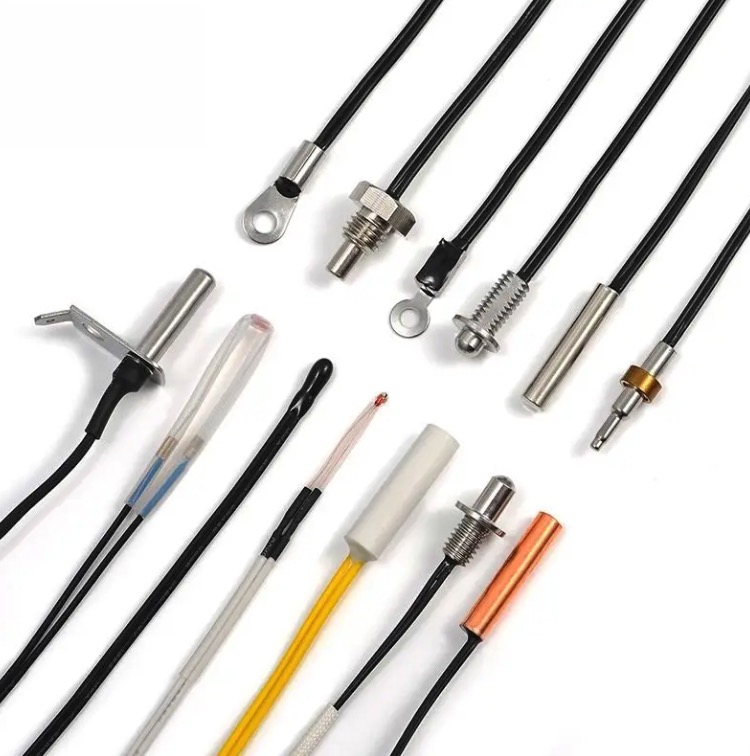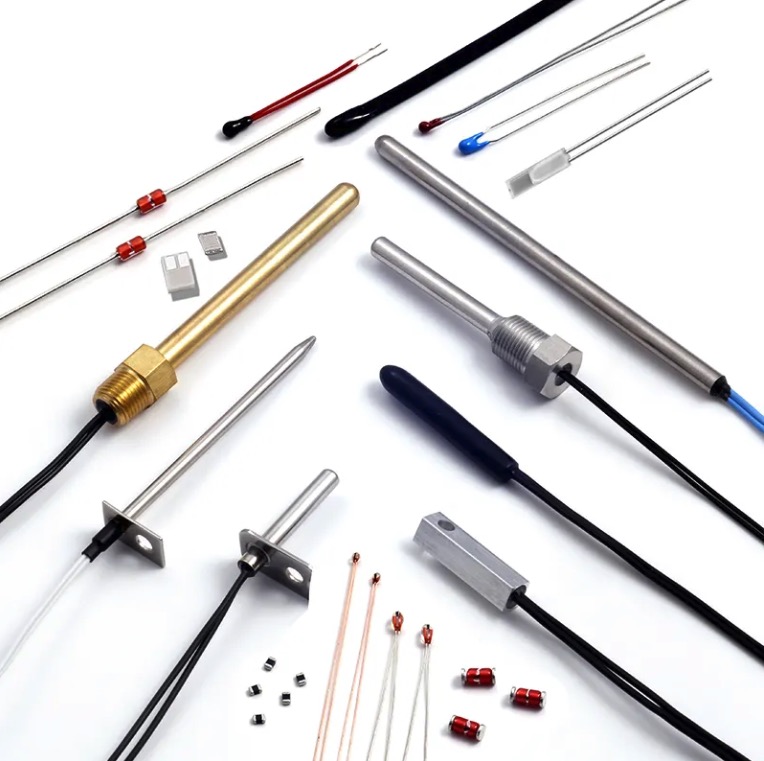Temperature sensors are vital tools for monitoring temperature in a wide range of industries. Among the most commonly used temperature sensors are RTDs (Resistance Temperature Detectors) and thermocouples. But how do you decide which one is right for your application? In this article, we’ll compare these two types of sensors and provide insight into how they differ in terms of performance, accuracy, and best use cases.
Understanding RTDs and Thermocouples
RTD Sensors: An RTD sensor measures temperature by correlating the resistance of the sensor’s material (usually platinum) with temperature. These sensors are widely known for their high accuracy and stability. The PT100 sensor is one of the most common types of RTDs, offering precise and reliable temperature measurements. They’re favored for applications requiring consistent, long-term performance in stable conditions.
Thermocouples: A thermocouple, on the other hand, works by producing a voltage when two different metals are joined together at different temperatures. The amount of voltage is proportional to the temperature difference. While thermocouples can handle extreme temperatures and are generally more robust, they offer slightly lower accuracy than RTDs. They are ideal for high-temperature environments.
Accuracy: Which is More Precise?
When it comes to accuracy, RTD sensors, specifically the PT100 sensor, are the superior choice. RTDs like the industrial RTD sensor provide highly accurate and repeatable temperature readings, making them perfect for applications requiring precision, such as HVAC temperature sensors or food industry temperature probes.
In contrast, thermocouples can be slightly less precise. While they are excellent for high-temperature measurements, their calibration can drift over time. This is particularly true in environments with fluctuating temperatures. However, in high-temperature probes used in industrial furnaces, thermocouples still remain a go-to due to their ability to measure extreme temperatures up to 1,800°C.
Temperature Range: Which Sensor Handles Extreme Conditions Better?
One of the standout features of thermocouples is their ability to operate in extreme environments. They are widely used in industrial furnaces, boilers, and other high-temperature applications because they can withstand temperatures up to 1,800°C without degrading.
RTDs, especially those using platinum, have a lower upper temperature limit compared to thermocouples. The PT100 sensor can generally handle temperatures up to 600°C comfortably. However, for most HVAC temperature sensor applications and more moderate temperature measurements, an RTD temperature probe is more than sufficient.
In high-temperature probes used in processes like industrial furnace sensors, thermocouples are preferred for their ability to handle such extreme conditions without failing. This makes them essential in industries like metallurgy, chemical production, and power plants.
Response Time: Which Sensor Reacts Faster?
In terms of response time, thermocouples generally offer quicker reaction times compared to RTDs. This is due to their design, which involves a small, thermally responsive junction that quickly adjusts to temperature changes. For fast-moving industrial processes, such as boiler temperature sensors, thermocouples can provide immediate feedback, making them a better choice.
However, RTD sensors, like the high accuracy PT probe, are still capable of providing a fast response, but they typically have a slower reaction time than thermocouples due to the thermal mass of the sensor. For applications requiring quick temperature measurements, such as BBQ temperature probes or wireless meat thermometers, thermocouples tend to offer more immediate results.
Durability and Reliability
Both RTDs and thermocouples have their unique advantages when it comes to durability, but thermocouples are often more robust in extreme environments. For example, thermocouple probes can withstand mechanical stress and high temperatures without significant degradation. This makes them ideal for harsh industrial applications like industrial furnace sensors and boiler temperature sensors.
On the other hand, RTD sensors such as industrial RTD sensors are extremely reliable in stable, controlled environments and are generally more durable when used within their optimal temperature range. However, they can be sensitive to vibration or shock, especially at higher temperatures, and thus may not perform as well in certain industrial settings that require high-temperature probes.
Calibration and Maintenance
RTD sensors, including the PT100 sensor, are known for their stability over time. They maintain their accuracy longer than thermocouples, which tend to drift more easily in high-temperature applications. For those wondering about how to calibrate an RTD sensor, it’s important to note that PT100 vs PT1000 differences may come into play depending on the specific application, but overall, RTDs require less frequent calibration and maintenance.
In contrast, thermocouples need regular calibration and might require replacement in environments where the temperature cycles between extremes. If you need a sensor that requires less frequent maintenance and calibration, an RTD temperature probe would be the better choice.
Which One Should You Choose?
Choosing between an RTD sensor and a thermocouple depends on your specific needs. Here’s a quick guide:
- For high accuracy and stable temperature readings: Choose an RTD temperature probe like the PT100 sensor. Ideal for applications such as HVAC temperature sensors and food industry temperature probes.
- For high-temperature, extreme conditions: Choose a thermocouple probe. Perfect for industrial furnace sensors, boiler temperature sensors, and applications where temperature ranges exceed 600°C.
- For fast response times: Choose a thermocouple if you need immediate feedback, like in BBQ temperature probes or wireless meat thermometers.
- For long-term durability and minimal calibration: RTDs are a better option for applications where sensors won’t be exposed to harsh mechanical conditions but will benefit from long-term stability, like in custom RTD sensor manufacturing for industrial applications.
Conclusion
Both RTD sensors and thermocouples have their strengths and weaknesses, and the right choice ultimately depends on your application’s temperature range, required accuracy, and operating environment. Whether you need a high-accuracy PT probe for your HVAC systems or a high-temperature probe for an industrial furnace, understanding the differences between these two sensors will help you make the best decision for your needs.
Need custom sensors for your specific application? Contact us today to learn more about our OEM temperature probe supply and how we can help you find the perfect solution for your project.





